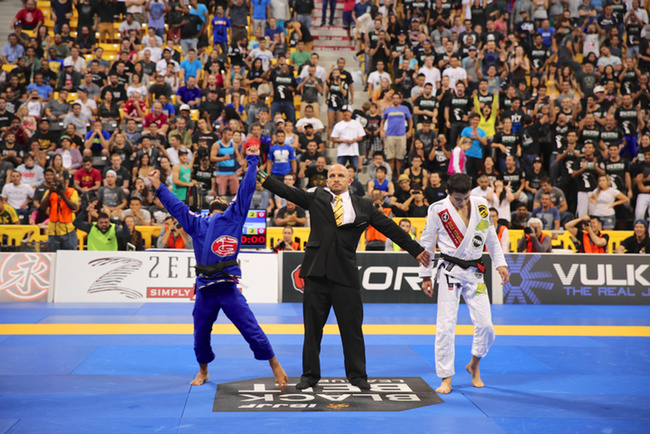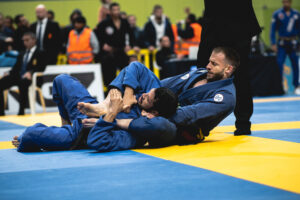When I first started, Jiu Jitsu professional BJJ competitions were a dream. Honestly, I never expected them to become a reality, let alone be invited to fight in them.
So, when I was approached by the guys at the Tuff Invitational I jumped at the chance to compete in a professional Sub-Only competition. Plus I would get to settle a score with an old rival, Paul Bridges, after nearly nine years.
The Arm Bar
Paul is one of the pioneers of UK BJJ, and I had the pleasure (or misfortune) to fight him under MMA rules back in 2006 on a UKMMA show.
This was really the early days of the UK MMA scene, and the competitors were nowhere nearly as well rounded as they are today.
Side note: Paul and I’s fight took place in one of the first cages in the UK. If you watch the video closely you’ll see there is a 3-inch gap between the cage and canvas, and the canvas was actually canvas, it hurt like hell when you grappled on it and left you with severe friction burns. Fun times.
At the time, I was primarily a Kickboxer, although I had done a fair amount of grappling and wasn’t afraid of the ground or to wrestle.
Paul, on the other hand, was already a purple belt and one of the top guys on the UK BJJ scene having won most of the comps available at that time.
It was a classic striker vs. grappler match up, that unfortunately for me, went the same painful way striker vs. grappler matchups go.
Check out the fight below:
This fight and Paul’s beautiful armbar are the main reason’s I got so heavily involved in Jiu Jitsu. I realised if I wanted a future in MMA I’d need to develop my BJJ skills to avoid situations like this happening again.
However, along the way I developed a love for Jiu Jitsu that overtook my desire to compete in MMA and be punched int the face. The rest, as they say, is history.
Unfortunately, I never had the opportunity to compete against Paul again. He was always ahead of me in belt rank, and by the time I’d caught up he was focusing on his academy.
I thought I’d never get to test myself against him again.
So, when the guys at the Tuff Invitational asked me who I’d like to fight, Paul was the first person I thought of, and thankfully he agreed.
The Rematch
My preparation for the match against Paul was a little strange. I’d just competed and won the No Gi Worlds for the second time and was in good shape. But I had a distinct lack of high-level training partners and it was still a 6-weeks out from the event so needed to stay in shape.
So, I did what I could and I found a few great people to train with around Devon (which meant a lot of travelling but hey-ho). And when I couldn’t roll, I supplemented with more strength and conditioning sessions.
By the time the fight came around, I was in the best shape I could be in and I had a solid game plan.
That’s an important lesson, many people miss. When you’ve done everything you can in preparation for a fight, you will feel more confident. This is why training camps are essential for creating many people’s positive mindsets.
So, how did the fight go? Well here’s a complete breakdown of the match
The Lessons
Personally, there’s tonne of things I took away from this event, including: not rolling for 40-minutes before a match, fighting on a platform feels like a deathmatch, and several other things.
And there are also a couple of important lessons you can take away from this it too. Here’s four of the most important:
1) Don’t keep driving forwards if you head gets caught during a takedown attempt. Instead, shuck your head out by turning towards your head towards the body. Here’s Braulio Estima demonstrating the technique:
2) Don’t wait when you’re passing guard. Instead, immediately go on the offensive and start to pass. This forces your opponent to defend your pass not whatever you did to get there.
3) Put yourself in a position where your opponent is forced to defend multiple things. Your opponent can only really defend one thing at a time, so if you have two attacking options, they will have to give you one.
This is the reason I was able to submit Paul. I forced him to defend the armbar, Sucuri, and his neck.
You may never have seen this submission before, it’s a little unusual but the Sucuri is incredibly painful. You can learn The Sucuri HERE.
4. Do your best to prepare for a match. Even if you don’t have a lot of time, or training partners, or whatever, the knowledge you’ve done everything you can to prepare for an event is incredibly beneficial to your mindset when competing.
If you enjoyed this article, please leave me a comment or share it with your friends. It would make my day.

To get your FREE copy of Performance Drilling and discover how to train like a world champion click the button below.


